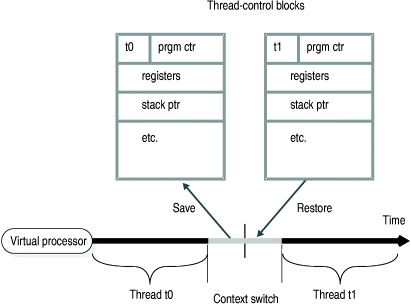
A virtual processor switches from running one thread to running another one by context switching. The database server does not preempt a running thread, as the operating system does to a process, when a fixed amount of time (time-slice) expires. Instead, a thread yields at one of the following points:
When the amount of processing required to complete a task would cause other threads to wait for an undue length of time, a thread yields at a predetermined point. The code for such long-running tasks includes calls to the yield function at strategic points in the processing. When a thread performs one of these tasks, it yields when it encounters a yield function call. Other threads in the ready queue then get a chance to run. When the original thread next gets a turn, it resumes executing code at the point immediately after the call to the yield function. Predetermined calls to the yield function allow the database server to interrupt threads at points that are most advantageous for performance.
A thread also yields when it can no longer continue its task until some condition occurs. For example, a thread yields when it is waiting for disk I/O to complete, when it is waiting for data from the client, or when it is waiting for a lock or other resource.
When a thread yields, the virtual processor saves its context in the thread- control block. Then the virtual processor selects a new thread to run from a queue of ready threads, loads the context of the new thread from its thread- control block, and begins executing at the new address in the program counter. Figure 24 illustrates how a virtual processor accomplishes a context switch.
